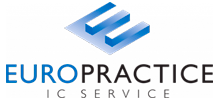09 Apr IHP SG13G2 – Paderborn University, Germany
[vc_row css_animation=”” row_type=”row” use_row_as_full_screen_section=”no” type=”full_width” angled_section=”no” text_align=”left” background_image_as_pattern=”without_pattern”][vc_column][vc_column_text]IHP SG13G2-electronics for applications in quantum technologies
High-Frequency Electronics and Department of Physics, Paderborn University, Paderborn, Germany[/vc_column_text][vc_empty_space][vc_row_inner row_type=”row” type=”full_width” text_align=”left” css_animation=””][vc_column_inner width=”1/6″][vc_column_text]Contacts[/vc_column_text][/vc_column_inner][vc_column_inner width=”5/6″][vc_column_text]Alex Widhalm, Andreas Thiede, Artur Zrenner
alex.widhalm@upb.de[/vc_column_text][/vc_column_inner][/vc_row_inner][vc_row_inner row_type=”row” type=”full_width” text_align=”left” css_animation=”” css=”.vc_custom_1585845387461{margin-top: 20px !important;margin-bottom: 20px !important;padding-top: 10px !important;padding-bottom: 10px !important;background-color: #ededed !important;}”][vc_column_inner width=”1/6″][vc_column_text]Technology[/vc_column_text][/vc_column_inner][vc_column_inner width=”5/6″][vc_column_text]IHP 0.13µm SiGe BiCMOS SG13G2[/vc_column_text][/vc_column_inner][/vc_row_inner][vc_row_inner row_type=”row” type=”full_width” text_align=”left” css_animation=””][vc_column_inner width=”1/6″][vc_column_text]Die size[/vc_column_text][/vc_column_inner][vc_column_inner width=”5/6″][vc_column_text]900µm x 720µm (mini@sic)[/vc_column_text][/vc_column_inner][/vc_row_inner][vc_row_inner row_type=”row” type=”full_width” text_align=”left” css_animation=”” css=”.vc_custom_1585845387461{margin-top: 20px !important;margin-bottom: 20px !important;padding-top: 10px !important;padding-bottom: 10px !important;background-color: #ededed !important;}”][vc_column_inner width=”1/6″][vc_column_text]Design tool[/vc_column_text][/vc_column_inner][vc_column_inner width=”5/6″][vc_column_text]Cadence Virtuoso version IC6.1.7-64b[/vc_column_text][/vc_column_inner][/vc_row_inner][vc_empty_space][vc_column_text]
Description
Quantum technologies play an increasingly important role in today’s world. In this context, quantum mechanical state control and state preparation play a central role. The state control can be performed utilizing coherent control.
Until now, coherent control of single QDs (Quantum Dots) has been demonstrated by using purely optical ps laser fields. In our work, we apply a new coherent optoelectronic control protocol, where we are using a combination of optical ps laser fields and ps electrical fields. For this purpose, we have designed IHP SiGe BiCMOS-Technology based electronic chips, which deliver voltage transients in the ps-time domain and operate at cryogenic temperatures (liquid helium 4.2K).
Our protocol has the advantage that the population of the QD can be achieved with π/2 laser pulse pairs, which play the role of an invariant optical clock. Coherent state preparation for any target state |T> is completely controlled by phase manipulation via the electrical pulses P(Φ1) and P(Φ2). This seems advantageous in terms of the systems scalability.[/vc_column_text][vc_empty_space][vc_row_inner row_type=”row” type=”full_width” text_align=”left” css_animation=”element_from_left”][vc_column_inner width=”1/3″][vc_single_image image=”17881″ img_size=”full” add_caption=”yes” alignment=”center” onclick=”link_image” qode_css_animation=””][/vc_column_inner][vc_column_inner width=”1/3″][vc_single_image image=”17880″ img_size=”full” add_caption=”yes” alignment=”center” onclick=”link_image” qode_css_animation=””][/vc_column_inner][vc_column_inner width=”1/3″][vc_single_image image=”17882″ img_size=”full” add_caption=”yes” alignment=”center” onclick=”link_image” qode_css_animation=””][/vc_column_inner][/vc_row_inner][vc_empty_space][vc_column_text]
Why Europractice?
The department High-frequency Electronics of University Paderborn has been using EuroChip and Europractice initiatives since its foundation in 1999. We have worked with OMMICs GaAs HEMT, ST Microelectronics CMOS and IHPs HBT technologies in numerous research projects. We appreciate the Europractice services for providing access to leading edge IC technologies and CAD tools at reasonable prices. It is thus wonderfully suitable for academic institutions![/vc_column_text][vc_empty_space][vc_column_text]
References
[1] Widhalm, A. et al. “Ultrafast electric phase control of a single exciton qubit” Appl. Phys. Lett. 112, 111105 (2018).[/vc_column_text][vc_empty_space][vckit_button style=”wayra” title=”More about this Project” radius_size=”none” custom_class=”vckit_custom_class_85e8634deb03e7″ tutorial=”” link=”url:https%3A%2F%2Feuropractice-ic.com%2Fwp-content%2Fuploads%2F2020%2F02%2FEP-activity-Report-2019.pdf%23page%3D24||target:%20_blank|”][/vc_column][/vc_row]
